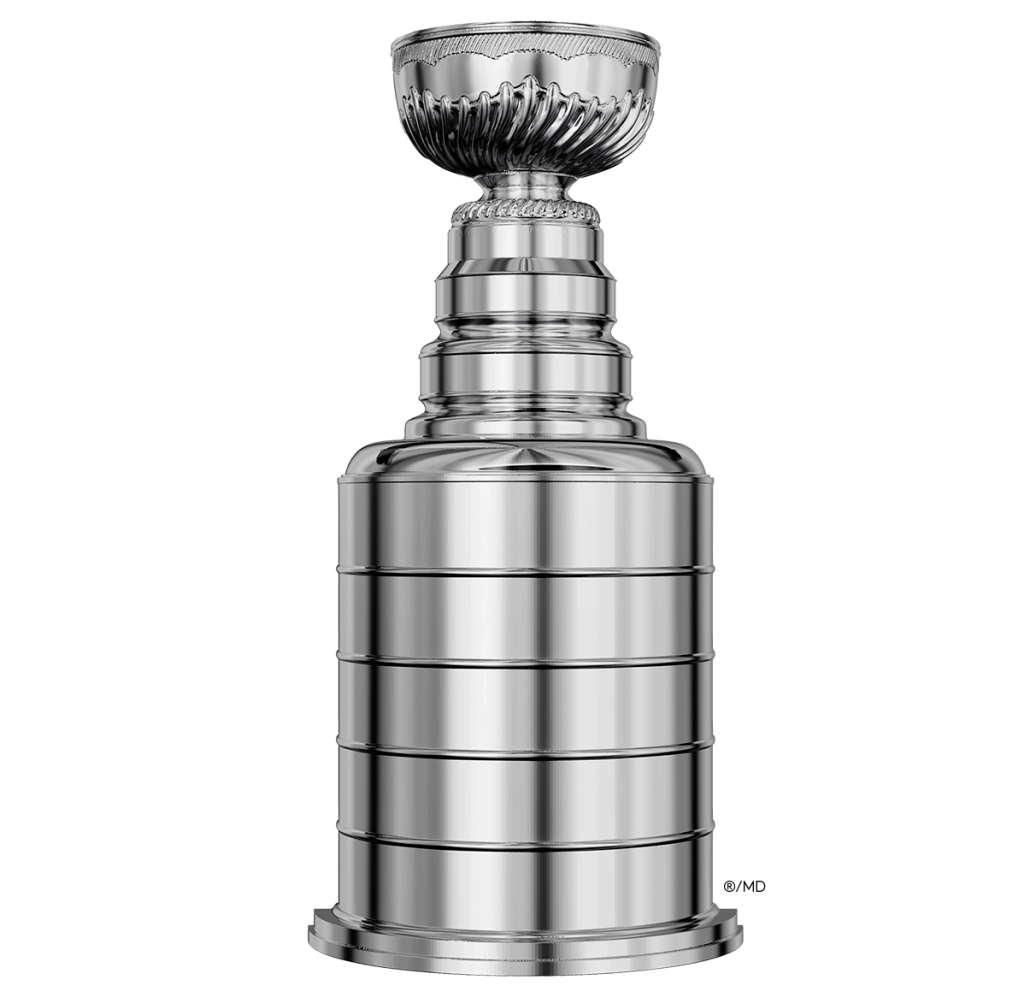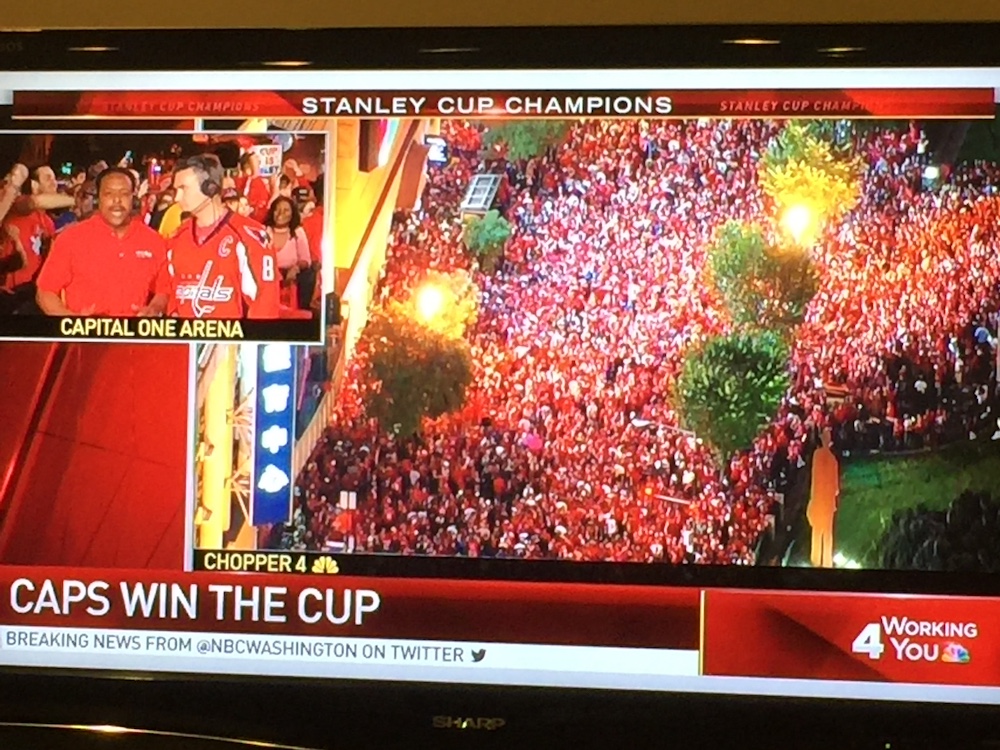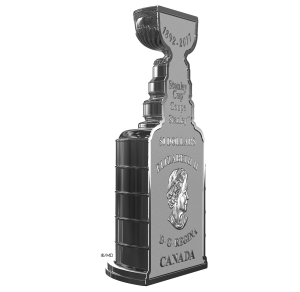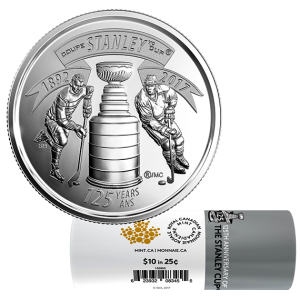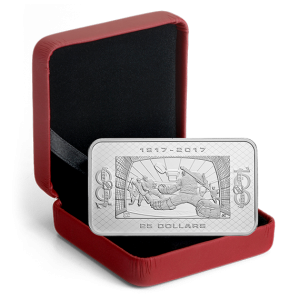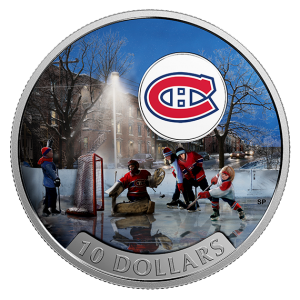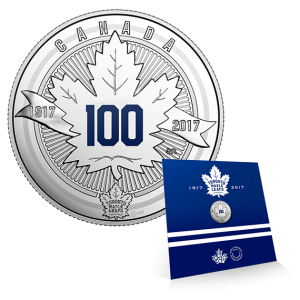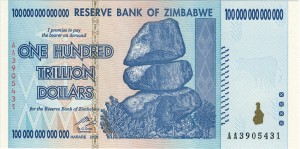Ice Hockey and Lord Stanley’s Cup highlighted with numismatics
Hockey is to Canada as baseball and basketball is to the United States.
Although all sports are represented throughout North America, ice hockey is purely a Canadian invention. Although there are records of hockey being played as far back as ancient Egypt, the first appearance of hockey played on the ice dates to the early 19th century in Nova Scotia.The early game was derived from the North American Natives game of shinney but played on the ice. From Nova Scotia, the game spread to the people living along the Saint Lawrence River in Montreal and Quebec. It quickly spread west to Ontario.
Montreal is to hockey as Springfield, Massachusetts is to basketball. The first organized games were played in Montreal where the first organized rules were formed. The first ice hockey club was the McGill University Hockey Club founded in 1877. This was followed by the Quebec Hockey Club in 1878 and the Montreal Victorias in 1881.
Lord Stanley of Preston, the Governor General of Canada, attended his first game in 1888 with his children who were hockey fans. Lord Stanley became a fan and noticed that there was no championship trophy awarded to the best team in Canada. He purchased a silver bowl to use as a trophy and created The Dominion Hockey Challenge Cup. It was first awarded in 1893 to the Montreal Hockey Club.While ice hockey was dominating in Canada, universities in the United States had their own version of ice polo played with a ball rather than a puck. The first game between collegiate hockey clubs was played in 1893 in Baltimore when Yale beat Johns Hopkins 2-1.
Lord Stanley’s sons were so enthusiastic about hockey that they traveled the world to introduce the sport to others. By 1903 they organized a five-team European league.
The Western Pennsylvania Hockey League was formed in Pittsburgh in 1898 which primarily operated in areas within a four-hour train ride from Pittsburgh. Most of the professional players were from Canada. In 1904, a rival International Professional Hockey League was formed to include Canadian cities.
With all of the competing leagues, the National Hockey Association was formed in 1908 to organize professional hockey in the provinces of Quebec and Ontario. With western Canada feeling left out, the Pacific Coast Hockey Association (PCHA) was formed to stretch professional hockey across Canada. The two leagues negotiated a championship between them that the winner of the series would will what was then being called the Stanley Cup first awarded by Lord Stanley.
World War I and a dispute between the owners and Toronto Blueshirts owner Eddie Livingstone saw the fall of the NHA in 1917. As part of their attempt to reorganize, owners formed the National Hockey League. The NHL was supposed to be a temporary measure until disputes were worked out but its success continues.The original NHL included the Montreal Canadiens, Montreal Wanderers, Ottawa Senators, and the newly created Toronto Arenas. The Wanderers disbanded in 1918 after the Montreal Arena burned down. In 1919, the NHA’s Quebec Bulldogs joined the league bringing the number of teams back to four.
The Toronto Arenas won the first NHL championship in 1918 and then defeated the Vancouver Millionaires of the PCHA for the Stanley Cup.
The NHL expanded but found itself hurt by the Great Depression and the onset of World War II. By the 1942-43 season, the league was reduced to what has been referred to as The Original Six, the six teams that were the NHL from 1942 until the first expansion in 1967. The original six are the Boston Bruins, Chicago Black Hawks, Detroit Red Wings, Montreal Canadiens, New York Rangers and Toronto Maple Leafs.
Today there are 31 teams with 24 operating in the United States and seven in Canada. The oldest team is the Montreal Canadiens whose history dates back to the NHA. The Toronto Maple Leafs can trace their history to the Toronto Blue Shirts of the NHA but does not acknowledge a direct lineage.Since its first presentation by Lord Stanley of Preston in 1893, the Stanley Cup has been awarded 101 times. It is the oldest team championship trophy in existence. The Montreal Canadiens have won the Stanley Cup 24 times, the most by any team. The Detroit Red Wings hold the United States record for 11 Stanley Cup victories.
Currently, the Washington Capitals are winning in the Stanley Cup Finals 3-1 against the Vegas Golden Knights. The Capitals played their first season in 1974-75 and appeared in the Stanley Cup finals once, in the 1997-1998 season. This is the Vegas Golden Knights first season as an NHL Team.
Since the Eastern Conference Finals, fans have been gathering around Capital One Arena to watch the games whether the Caps are at home or on the road. All of the games have been projected on the side of the National Portrait Gallery on G Street NW. For road games, fans have been allowed into the Capital One Arena to watch the game on the big screen.To say that the area has gone Caps crazy would be an understatement. The neighborhood around Capital One Arena, known as Chinatown, will be flooded with fans on Thursday to watch the game outside projected on the side of the National Portrait Gallery and from the bars around the area.
In the area is the headquarters of the U.S. Mint on 9th Street NW. Although its sales counter may be open during the day, the crowds are expected to gather in the area beginning around noon. Plan accordingly.
If you are going to be in Washington and want to experience the fans Rock the Red (the Caps wear red sweaters at home leading to the moniker), you are welcome to join the crowd. If you want to avoid the crowd, find something else to do on Thursday that might be away from the area. This might be a good day to visit the Steven F. Udvar-Hazy Center of the Smithsonian’s Air and Space Museum. It is located in Chantilly, Virginia near Dulles Airport about 25 miles east of the Capital One Arena and far away from the crowd.
As for me, I will be watching from home. Since my team has not won the Stanley Cup since 1983, I am cheering for the Caps.
Weekly World Numismatic News for June 3, 2018
For those of you who do not like where politics and policy cross the line into numismatics, this post is not for you. Skip past the beginning into the news section below.In the news this week was a story about the Reserve Bank of Zimbabwe touting the adoption of Chinese currency for general use in the country as circulating currency.
Zimbabwe’s economy has seen wild swings between massive inflation and significant economic stagnation that has caused currency fluctuations so bad that the country has given up managing its own currency. The economic problems have created a hyperinflation currency with notes printed with denominations as high as 100 Trillion Zimbabwean Dollars. So many of these notes were printed that any collector can buy them for $5-10 each.
Because of trade restrictions, Zimbabweans turned to United States currency smuggled from outside of the country. The supply of United States currency was so limited that some had begun the practice of cleaning the paper because people were carrying their currency in their underwear and new notes were difficult to come by.
Following negotiations with the United States, the RBZ was able to obtain new currency notes and offered an exchange to its residents. But that is where the negotiations ended. Upon the change of administrations, the current Department of the Treasury stopped negotiating with Zimbabwe and other African nations to introduce additional trade in United States dollars.
As the United States began to abandon these countries, the Chinese stepped in. The Chinese government has been negotiating with these countries and have made several inroads, especially in Africa. Zimbabwe is just the latest to announce that they could adopt the Yuan as their currency.
Although Zimbabwe is not an influential economy, it expands the Chinese economic base in Africa. By chipping away at the United States economic influence, it reduces the impact of the dollar on the continent that could have an effect on numismatics.
Africa continues to have the largest deposits of precious metals. Southern African regions have the world’s most active gold, silver, and platinum mines that if the United States loses influence in the region could have a negative effect on worldwide precious metals prices.
It is not a matter of the golden rule, “He who has the gold rules,” it is a matter of who controls the flow of gold from those mines. If the Chinese control the economic engine that runs those mines, they can use that influence to make or break the markets as they see fit. The ripple effect could not only bring higher precious metals prices but worldwide economic instability.
History has taught us that market manipulating does not work except if the manipulators have a backup plan. In this case, the Chinese are using their treasury as the backup plan. They are amassing economic power that could manipulate markets to the point that would cause prices to rise.
Currently, precious metals prices are set by arrangement with the London Bullion Market Association (LBMA) based on the daily auction prices in London. This is known as the London Fix Price. The market uses United States dollars for its pricing. However, if the dollar loses its economic power because the Chinese are controlling the markets where the metals are mined, it will affect the cost of everything.
In the short term, economic factors will affect the price of bullion being produced by the U.S. Mint since those prices are based on LBMA price averages. Collectors and investors will be hit first. After that, it would be a short time before economic instability hits everyone else.
And now the news…
If you visit Stones River National Battlefield and Cemetery, you'll likely see coins on the top of many tombstones. According to park workers, the small mementos are a way some choose to pay their respects to the fallen soldier, and each kind of coin has a different meaning. 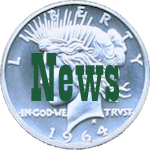 → Read more at newschannel5.com
→ Read more at newschannel5.com
In this edition of East Idaho Newsmakers, Nate Eaton speaks with Randy’L Teton. Teton is a Fort Hall native and is featured on the US Sacagawea dollar gold coin. She is the only living person to currently appear on a United States coin. During their conversation, Teton shares the fascinating story of how she ended …  → Read more at eastidahonews.com
→ Read more at eastidahonews.com
TOKYO (Jiji Press) — The Finance Ministry said Friday that it will issue a silver coin to commemorate the 150th anniversary of the 1868 start of the country’s Meiji period, which ended in 1912.  → Read more at the-japan-news.com
→ Read more at the-japan-news.com
Ahmed Mohamed Fahmy Yousef has spent the last academic year at the University of Colorado conducting research on learning technologies and instructional design in computer science education.  → Read more at dailycamera.com
→ Read more at dailycamera.com
Tawanda Musarurwa, Harare Bureau The adoption of Renmimbi/Yuan as a reserve currency, will help the country repay loans and grants from China, the Reserve Bank of Zimbabwe has said.  → Read more at chronicle.co.zw
→ Read more at chronicle.co.zw
Archaeologists in Egypt have unearthed a 2,200-year-old gold coin depicting the ancient King Ptolemy III, an ancestor of the famed Cleopatra.  → Read more at foxnews.com
→ Read more at foxnews.com
An ancient Egyptian coin discovered in far north Queensland has researchers questioning how it got there.  → Read more at abc.net.au
→ Read more at abc.net.au
The Royal Canadian Mint unveiled their first-ever panda-themed coin at the Calgary Zoo.  → Read more at thestar.com
→ Read more at thestar.com
May 2018 Numismatic Legislation Review

Augustus Saint-Gaudens National Historic Site
(Image courtesy of the National Parks Service)
Essentially, the bill redesignates the Saint-Gaudens National Historic Site, Augustus Saint-Gaudens’ former home in New Hampshire, as the “Saint-Gaudens National Historical Park.” The change is significant in that it changes the funding for the staffing and maintenance of the site. It also will keep the site accessible for tourism.
Augustus Saint-Gaudens is known as the artist who co-conspired with President Theodore Roosevelt in his “pet crime” to redesign United States coinage. Before his death in 1907, Saint-Gaudens provided the design for the $20 Double Eagle and $10 Eagle gold coinage.
Saint-Gaudens’ legacy did continue after his death by his students Adolph A. Weinman, designer of the Walking Liberty half-dollar and Mercury dime, and James Earle Fraser, designer of the Buffalo Nickel.
S. 2863: National Law Enforcement Museum Commemorative Coin Act
H.R. 965: Saint-Gaudens National Historical Park Redesignation Act
21 Down, 4 To Go
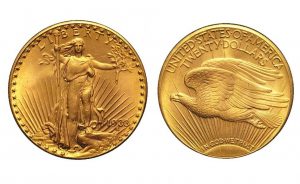
One of the ten 1933 Saint-Gaudens $20 Double Eagle gold coins from the Longbord Hoard confiscated by the U.S. Mint
Coin World reported that the previous owner, who wishes to stay anonymous, turned in the coin because he did not want to be caught with the coin that federal courts ruled was stolen government property. Department of the Treasury and U.S. Mint officials have been instructed by the Department of Justice not to go into any further details about the case.
Since it has been assumed that 25 of these coins were taken from the Philadelphia Mint, that leaves four left at large.
According to Coin World, “The Secret Service still has on its books a directive to seize any extant 1933 double eagles as stolen government property.” However, other coins, patterns, and fantasy pieces including the five 1913 Liberty Head Nickels and the 1974 Lincoln Cent trial strike made from aluminum are still in private hands.
As long as this bogus double standard remains the policy of the federal government, we will likely never know whether the rumored 1964 Peace Dollars are real.
